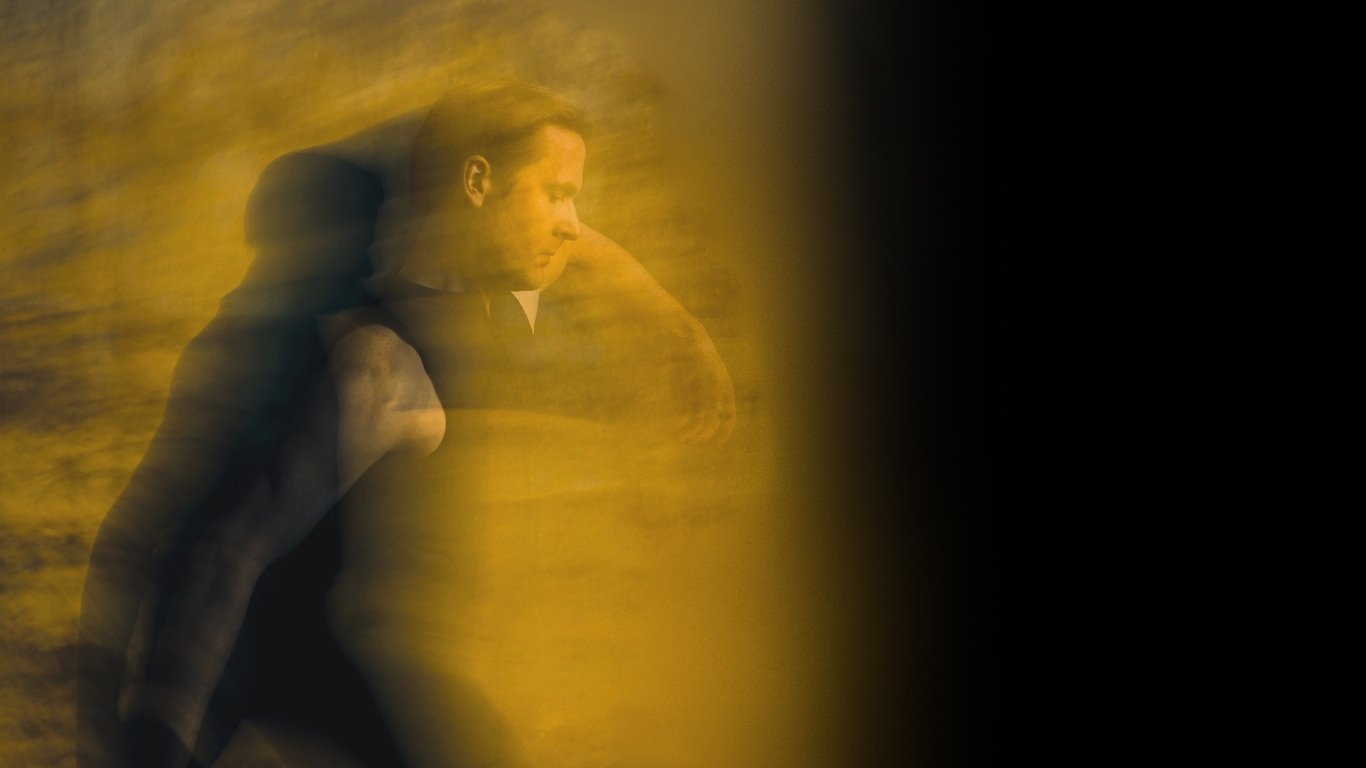New Full-Length Narrative Ballet · Act II Feature
The Curious Life of Edgar Allan Poe
Obsession, grief, and passion—told through his tales.
The Curious Life of Edgar Allan Poe is a groundbreaking new ballet by Julianna Rubio Slager and Glorielle Niedfeldt,
blending neo-classical ballet and African Diaspora movement. Supported by the National Endowment for the Humanities as part of
America 250, it reimagines Poe’s life through his stories as a redemptive exploration of grief, beauty, and moral awakening.
Date: April 18
Pre-show talk: 6:30 PM (Harry Lee Poe)
Performance: 7:30 PM
Venue: Harris Theater for Music and Dance
Runtime: 90 minutes (including intermission)
Come for the atmosphere. Stay for the heartbreak. Leave with a question you’ll argue about on the way home.
What You’ll Experience
- Story-first ballet with theatrical clarity and emotional bite.
- Immersive stagecraft shaped by spoken word, sound design, and surreal imagery.
- A fresh movement language blending neo-classical ballet and African Diaspora forms.
- Context before you watch: a 6:30 PM pre-show talk with Harry Lee Poe.
Music & Composers
A distinctive element: our score draws from major American composers—supporting the production’s historical and cultural lens.
Adolphus Hailstork
William Grant Still
Florence Price
Amy Beach
George Morrison
Marco Zanotti
Rebekka Karijord
William Dawson
(Yes, this is your permission slip to fall in love with the music before you even buy the ticket.)
Choose Your Lens
For Dance Lovers
Craft-forward choreography with a hybrid vocabulary—clean structure, deep groove, and emotional immediacy.
- Built for momentum and musicality
- Atmosphere you can feel in your soul
- A full narrative arc, not a highlight reel
For Literature Lovers
Poe’s stories as a mirror of the man—grief, beauty, and moral awakening without turning him into a stereotype.
- Pre-show talk at 6:30 PM (Harry Lee Poe)
- Smart adaptation: themes, not trivia
- Perfect for book clubs and debates
For Theatergoers
A theatrical night out: narrative momentum, design, and payoff—no prior Poe knowledge required.
- Clear storytelling and big feeling
- Sound and visuals guide the journey
- One evening, one complete journey
Synopsis
In the shadow of loss, Poe’s inner world fractures into the stories he wrote—each episode pulling him toward beauty,
terror, and the possibility of redemption. Love and grief braid together until the question becomes unavoidable:
what do we do with the life we’re given—before it vanishes?
Read the longer description
Poe moves through an imagined psychological landscape where memory, desire, and dread collide. The stories that made him immortal emerge as reflections of the man himself—his losses, his longing, his tenderness, and his spirals.
What begins as an atmospheric descent becomes a reckoning: will grief swallow him, or transform him?
Meet the Choreographers
Julianna Rubio Slager
Julianna is the Co-Founder and Artistic Director of Ballet 5:8. A Mexican-American choreographer, she creates original ballets that explore faith,
culture, and the human condition. Her works have been called “bold” and “visually arresting,” blending classical ballet with rich narrative and
emotional depth. Julianna’s choreography centers marginalized voices and brings thought-provoking stories to stages across the country.
Glorielle Niedfeldt
Glorielle is a Chicago-based choreographer, dancer, and educator whose movement roots draw from ballet, West African, and Afro-Caribbean traditions.
As co-choreographer for The Curious Life of Edgar Allan Poe, she brings a layered, rhythmically complex voice to the work. Her choreography
examines historical memory and cultural resilience, creating space for dialogue and connection through dance.
Stephanie Martinez
Chicago-based choreographer Stephanie Martinez is known for kinetic, psychologically revelatory work that expands the boundaries of contemporary ballet.
She has created original works for companies including Joffrey Ballet, Ballet Hispanico, Luna Negra Dance Theater, and many more, with over 60 ballets
made across the country.
Read Stephanie Martinez’s full bio
Over eleven years of award-winning works, Chicago-based choreographer Stephanie Martinez moves her audiences along a journey guided by
the kinetic momentum of her work. With original creations for Joffrey Ballet, Ballet Hispanico, Luna Negra Dance Theater, Charlotte Ballet,
Sacramento Ballet, Eugene Ballet, Nashville Ballet, Ballet Memphis, Kansas City Ballet, and National Choreographers Initiative among others,
Martinez’s versatility expands the boundaries of contemporary ballet movement. Martinez has created over 60 ballets on companies and collegiate
programs across the country.
In 2015, Martinez was awarded Joffrey Ballet’s “Winning Works: Choreographers of Color” commission and the Chicago 3Arts Award in recognition
for her work as a female artist of color. More recently, Martinez was awarded an NEA grant for her premiere of Bliss! with Joffrey Ballet.
Dubbed “a chameleon” of choreography by the Chicago Tribune, Martinez’s psychologically revelatory works challenge the viewer’s notion of what’s possible.
Tickets
Tickets are available through the Harris Theater. Plan to arrive early for the 6:30 PM pre-show talk with Harry Lee Poe.
Runtime: 90 minutes (including intermission).
Inspiration Playlist
Curious about the sonic world behind the production? This playlist informed our atmosphere, emotional palette, and pacing.
Full Evening Program
- Act I: Grace in the Rush (World Premiere) · Stephanie Martinez
- Act II: The Curious Life of Edgar Allan Poe · Julianna Rubio Slager
Arrive early: pre-show talk begins at 6:30 PM.
Come for the story. Stay for the discussion.
Get Tickets



